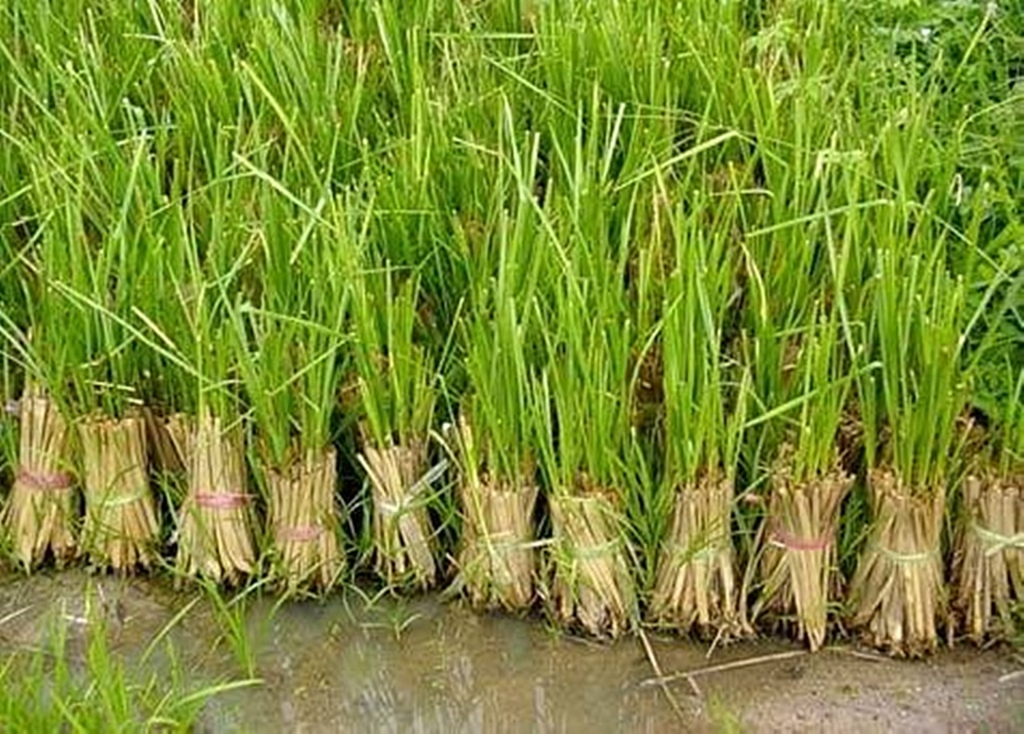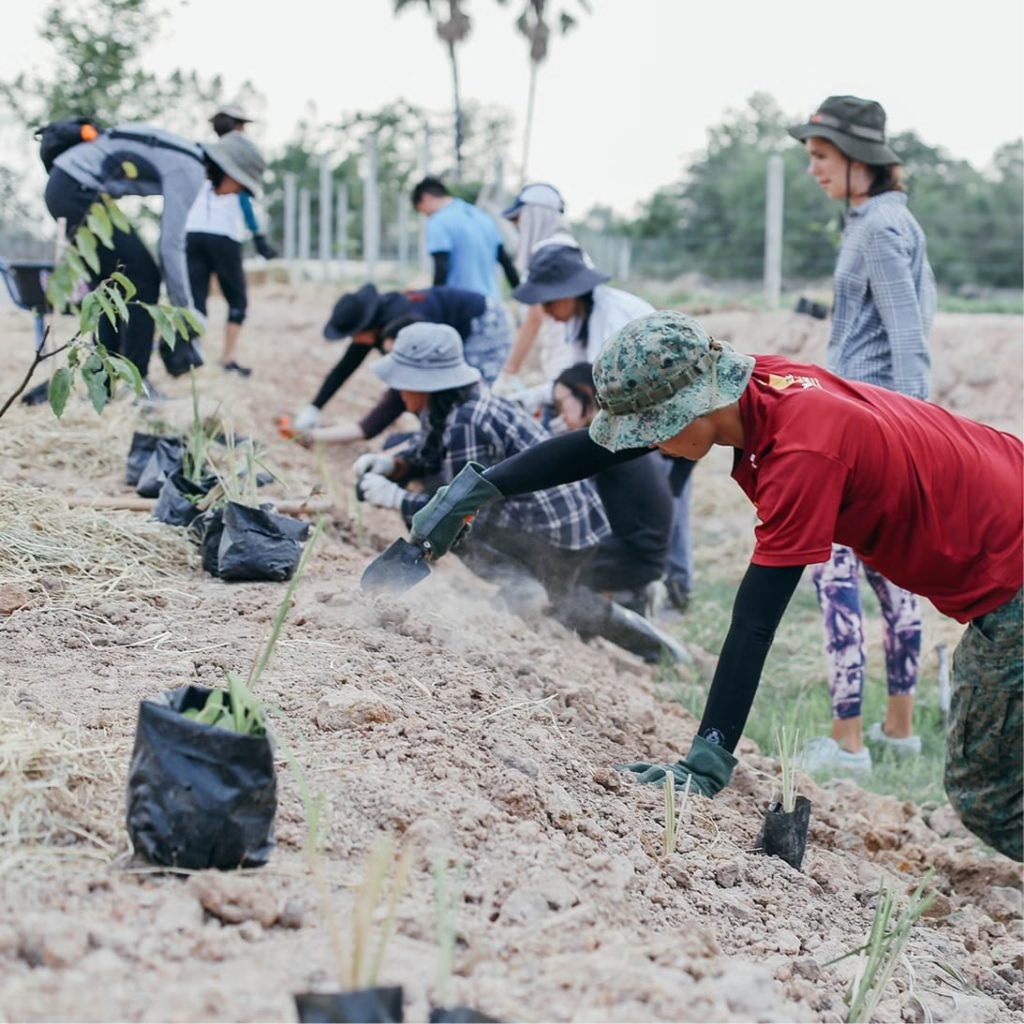CHIANG RAI – The Green Globe Institute of PTT has joined forces with Kasetsart University and the Hin Lad Nai community in Wiang Pa Pao to restore the village using vetiver grass, a plant promoted under the royal initiative of King Rama IX.
The project blends local wisdom with bioengineering to repair the village and reduce the risk of future landslides, after severe mud and flash floods devastated almost the entire community in September 2024.
Mr Phongsak Phetkhongkaew, District Chief of Wiang Pa Pao, chaired a public briefing on the research results. The study focused on how to use vetiver grass together with bioengineering techniques to prevent mudslides on steep slopes and reduce the chance of repeated disasters.
The research took place directly in the affected area at Hin Lad Nai village, Ban Pong subdistrict, Wiang Pa Pao district, Chiang Rai, late last week.
On 23 September 2024, a flash flood swept through the village and caused heavy damage. Restoration work is still ongoing today, with a focus on rebuilding homes, repairing infrastructure, and restoring access routes.
Associate Professor Dr Apinite Chotisangkasa, head of the research team from Kasetsart University, explained that villagers have worked hard to rehabilitate their community, especially the main access roads and internal routes.
However, the area is very steep, which makes it highly prone to natural hazards such as landslides and heavy runoff.
Researchers, together with the Green Globe Institute of PTT Public Company Limited, began studying how to reduce this slope-related risk. They applied engineering techniques alongside biological methods and local knowledge, an approach they refer to as bioengineering.
They then brought in vetiver grass, a plant promoted under the royal initiative of King Rama IX, and integrated it with engineering structures to tackle soil erosion.
The research included studying slope angles, water flow strength, and how to use protective materials. Examples include using piles to strengthen the soil and winged sandbags to slow down water seepage.
Vetiver grass reduces water speed and cuts down erosion
The team also planted vegetation between sandbags to improve long-term stability. On steep slopes, vetiver grass was planted along contour lines, then bamboo, a natural and easily sourced material, was installed along the vetiver rows to reduce water speed and cut down erosion from strong runoff.
This method creates what the team describes as a living wall on the soil surface. Beneath the ground, the dense roots of vetiver act like steel reinforcement in concrete, strengthening the soil. The plants need time to grow, so bioengineering structures support the area while nature recovers.
The concept follows the royal initiative of King Rama IX, which is to let nature help restore nature, step by step, leading to long-term stability.
Ms Sasiporn Panikbut, Deputy Secretary General of the Chaipattana Foundation committee for royal-initiated projects, said that the vetiver and bioengineering research at Hin Lad Nai is a joint effort by PTT Public Company Limited and Kasetsart University.
She described it as an innovative way to extend the use of vetiver, often called a “miracle grass” in royal projects, to protect communities from natural hazards in a concrete and practical way. Vetiver not only helps prevent landslides, but it also offers other uses, such as raw material for local handicrafts, which means extra income for villagers. She said the research is both useful and promising for community development.
Vetiver grass helps stop erosion and landslides
Mr Phongsak Phetkhongkaew added that Wiang Pa Pao district is surrounded by mountains, especially along the route from Wiang Pa Pao to Phrao district, where steep slopes are home to many communities. Over the past two to three years, rainfall has increased and become more intense in some areas, creating what locals call “rain bombs”.
These events have triggered landslides and heavy damage. Roads have been cut off, and in some cases, emergency assistance by helicopter was the only option. He described the situation as both difficult and critical, which led authorities and partners to seek long-term solutions, including this research project. The bioengineering work at Hin Lad Nai is expected to serve as a model and be expanded to other high-risk areas across Chiang Rai.
Ms Kamonwan Wongwilai, Director of the Green Globe Institute, PTT Public Company Limited, said that Hin Lad Nai has long been connected with the institute. The community has won Green Globe awards several times, both in the community category and in the Sipnonketutthas award category, which created a strong relationship and sense of responsibility to support the village in this crisis.
Since the village sits on steep terrain with a high risk of erosion and landslides, the team adapted knowledge from a previous bioengineering project at Ban Na Tham in Surat Thani province. They combined three key elements: bioengineering methods, local wisdom, and the special properties of vetiver grass. These three pillars form the core of the protection system.
The Green Globe Institute acts as a coordinator, connecting these three areas of knowledge and turning them into practical research for long-term solutions. In the case of Hin Lad Nai, the goal is to develop the village as a learning site for tackling soil erosion problems on steep slopes. At the same time, the work carries forward the royal initiative of King Rama IX on soil conservation and sustainable land management.















